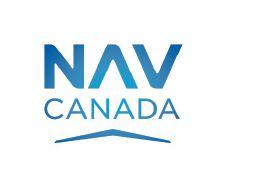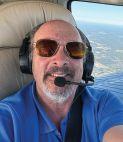
By Phil Lightstone


By Phil Lightstone
Canadian businesses face a greater need for data security under U.S. threats
On March, 2025, the U.S. government began implementing long-threatened punitive tariffs against Canada, and other countries. Over the course of the past several weeks, with reciprocal tariffs rising and falling, appearing and disappearing, the global economy is on a roller coaster ride of uncertainty culminating in devastating stock market declines. The S&P 500 in the first week of April fell by as much as 20 per cent from February highs.
The media has been focused on hard goods but what about data and applications utilizing the cloud. During the 2010s and 2020s, large companies, then followed by small- to medium-sized businesses (SMBs), moved their data, applications and compute power to infrastructure from Microsoft (Azure), Amazon (AWS) and others. Other application providers utilize these cloud infrastructure companies to host their cloud-based applications (software as a service or SAAS). From an aerospace perspective, large fleet companies and smaller charter organizations utilize cloud providers to provide many applications, including: maintenance management systems, aircraft scheduling, billing, booking management, ticketing, reservations and eAPIS management, accounting systems, social networking; email systems, digital content management, security and antivirus systems – the list is endless.
In lieu of the U.S. government’s weaponization of tariffs, Canadian businesses, as well as the public, should be concerned about data sovereignty. Is their data, and applications implemented on systems, controlled by Canadians and will U.S. corporations with Canadian subsidiaries ensure that Canadian access to their applications and data remain unfettered?
What if the current U.S. administration signs an Executive Order weaponizing the internet, requiring U.S. data companies to withdraw access to Canadians to their cloud, applications and customer’s data? It sounds excessive, but to what non-lethal lengths will Donald Trump go. It’s not that dissimilar from the U.S. embargo against Cuba, preventing U.S. companies from conducting trade or commerce with Cuban interests since 1958.
How will Canadian corporations and the public conduct their day to day digital lives. What would happen if Apple turned off iCloud and Google disabled Canadian access to Gmail and Google Docs? There was a lot of hype about the Internet of Things (e.g. Nest Thermostats, smoke detectors), will the administration follow the lead of state sponsored hacking of internet attached devices. Will Netflix be required to turn off access? Will Hollywood turn off its streaming movie services to Crave (a Canadian telco content service)? How will the Canadian financial industry deal with the American banks that they own.
Point being, the impact of intertwined IT systems not only is complicated but would require a serious amount of time and expertise just to understand the full interconnectivity. If the Americans choose to weaponize the internet, would the Government of Canada require all Canadian Internet Service Providers to disconnect their cross-boarder connections? Will the telecommunication providers, who use IP based voice services to route telephone calls across the border, be required to turn off these IP circuits, which

With continuing threats from the U.S., Canadian businesses should look at how and where their data is controlled.
could contain internet based threat vectors?
NAV Canada’s NAVAID Modernization Program leverages satellite communication systems through implementing a multi-year program decommissioning ground systems such as VORs and NDBs. The WAAS GPS system was originally developed by the FAA and the Department of Transportation is controlled by the U.S. Department of Defense. The WAAS system is comprised of both satellites and ground stations. ICAO refers to this type of system as Satellite Based Augmentation System (SBAS). Europe and Asia are developing their own SBASs.
Perhaps this is the tipping point for Canadian businesses to re-evaluate their IT strategies and security technologies, people and process. Many businesses do not have Chief Security Officers (CSO). You know you’re in trouble when you ask a corporation how long they have had a CSO and the CEO responds with “what’s a CSO”. What about the corporation’s customer data (your name, address and credit card information), are they secure or on their way to a foreign power?
The current trends in the U.S. are a wake-up call for CEOs and CIOs to ensure that their IT infrastructure is secure and intact. Many corporations tend to be reactive to IT threats rather than proactive. The Canadian Anti-Fraud Centre reports that in 2024 $638 million was lost by 34,621 fraud victims ranging from Nigerian romance scams to RCMP impersonators to vendors of fake Taylor Swift concert tickets.
The day-to-day activities of participants in the aviation sector utilize a long laundry list of IT resources including software applications, professional services, hardware and on-site technical
support. With some organizations being four or five decades old, their core business systems may be ancient. These applications were designed and created when IT security concerns were not front and centre in many CIO’s minds (as compared to 2025). The challenge for many companies is creating an IT strategy that includes technology modernization aligning to future technologies and threats (yet to be invented or delivered).
Kadex Aero Supply, a Canadian aircraft parts distributor, was founded in 1994 with two locations in Canada. As a small business, Kadex leverages Jonathan Plomp, CIO, and a team of outsourced professional services companies. Their Enterprise Resource Management and Distribution Management System runs on computer hardware residing at Kadex’s head office in Peterborough, Ont. (CYPQ). All branch offices utilize Virtual Private Network (VPN) technologies – riding over the open internet – to create secure tunnels to their host systems at head office. From an employee’s perspective (at their remote sites), it appears that they are at head office.
“With all our business critical apps in house, we are exercising an appropriate amount of control over our data,” Plomp says. “Order entry into our ERP system is done by our sales staff. While we like the personal touch of over the telephone and email communications with our customers, the new generation of buyers prefer to do their own data entry. Our only cloud subscribed services are Microsoft Exchange and Office 365 in the Cloud, with no email servers on premise. The recent MS Exchange and Office 365 data outrage, lasting roughly half a day, created significant business issues. We are currently exploring bringing email services back inhouse.”
Anthony Norejko, President and CEO, Canadian Business Aviation Association, reports: “From a broad stroke’s perspective, while the potential risk is low and we are not suggesting that there is a significant probability of the U.S. weaponizing the internet, completely eliminating commercial interdependencies or turning off the WAAS GPS network to Canadians, business aviation operators should understand critical points of failure in their operations. As an association, we are more concerned with the upcoming election.”
Data sovereignty is further challenged as systems communicate data between air navigation system providers, such as FAA and NAV Canada, moving flight plans between each other. Consider the integration of next generation air navigation systems, with data transmitted from aircraft to NGANS occurs in real time. Air carriers will use third-party systems and infrastructure at foreign airports to move flight and passenger data from the edge (airport) to their core data systems. As data is transmitted internationally, the opportunity for data interception, manipulation and storage exists, possibly compromising the security of the flight, passenger privacy and operational procedures.
The utilization of AI systems to analyze, create and execute system attacks creates an environment where compute technologies can create unstructured attack vectors, which could be challenging for current security systems to react to. This issue is enhanced as we see the explosion of RPAS (drone) usage. Securing these systems are paramount to ensuring that RPAS are not readily available for terrorism.
Under the current political climate, where existing treaties are breached and foreign countries are weaponizing IT technologies, one wonders when cross border internet traffic will be taxed (tariffs only apply to products). This could be challenging for data centre operators to ensure that their intra-data centre traffic remains on domestic soil.
IT management best practices would include IP traffic trace routes to validate that traffic remains on domestic soil. This traffic analysis should be conducted in a fail-over state (most data centres utilize redundant telecommunication circuits and, in some cases,
multiple telcos) with the cooperation of the telecommunications provider. Testing and validation ensures that the technical and business requirements of the telecommunication contracts are being meet.
“Most of our core applications are running on Microsoft’s Azure platform,” Michael Fedele, President, Execaire Aviation, says. “During the contracting phase of our IT modernization project, we ensured that all our data was stored in Microsoft data centres located in Canada. In fact, we just completed an IT audit ensuring that all Execaire data is resident on Canadian soil.”
One well known international brand’s Canadian operations moved its ERP systems to a cloud provider five years ago, at a cost of $60,000 per year (for the cloud infrastructure only, not applications). Five years later, that same amount of cloud resources is costing them $150,000 per year. Conversely, this organization will repatriate its apps and data to premise technology, with the cost of its new servers at $60,000 (with a five-year deprecation). While this is not the full Total Cost Ownership (historically I used hardware cost as 20 per cent of total TCO), the implied savings are immense.
Understanding where your data is, both in transit and at rest, and who controls the data (and applications) are critical to creating and implementing an IT strategy to allow aviation operators to survive the aftermath of a North American conflict.
Looking in the rearview mirror, after 9/11, a large number of SMB companies filed for bankruptcy not being able to transition the events of 9/11. Understanding your digital environment across your entire aviation footprint will help craft an aviation-focused IT and Business Continuity plan, which can help your company weather any potential upcoming storms in an extremely unpredictable world. | W
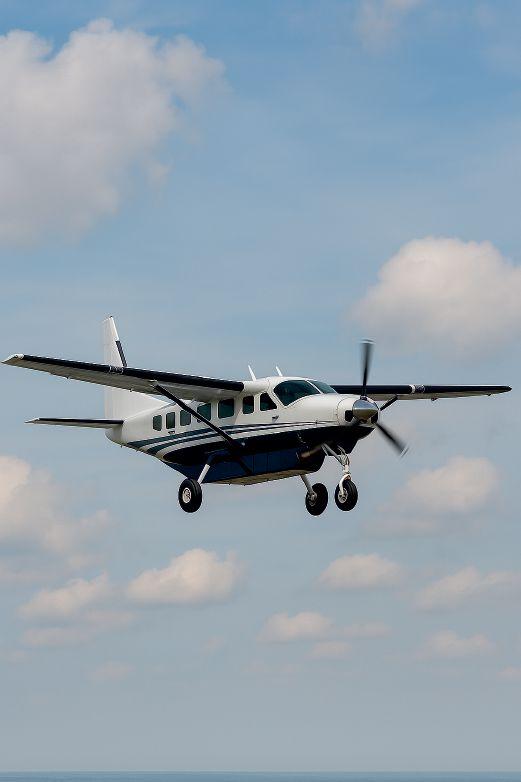


By Tim Anderson |
On April 1, 1997, Transport Canada divested itself of many of the country’s airports that it controlled, transferring responsibility and ownership of most of these airports to municipalities. At the time, this change was perceived as a means to reduce federal costs, enhance local control, and stimulate economic growth by encouraging community-driven development. Municipalities viewed airports as an economic driver and a source of revenue potential.
Nearly three decades later, however, the implications of that decision have become more intricate. Some airports benefited from routine maintenance and upgrading, while others, which may have received upgrades shortly before the transfer, did not. This has caused some to show their age now. Many smaller airports struggle to remain operational amid shrinking maintenance budgets. In comparison, larger airports confront issues related to cost structures, capacity challenges, and concerns regarding the need to modernize their infrastructure.
Adding to this challenge is that many airports struggle to convince local governments of the importance of their role. Airports offer significant economic benefits to their surrounding communities. They serve as a gateway for both tourists and businesspeople. They can also serve emergency services such as air ambulance and firefighting aircraft, and these are just transient activities. If the field has a flight school, maintenance facility or other aviation business based there, the benefits to the local economy increase significantly. Unfortunately, some municipalities do not see these benefits. Many airports are viewed as playgrounds just for pilots, and those with this belief think they should be 100 per cent self-sufficient financially without any input from the broader taxpayer.
While this perspective can be understood, it’s not accurate. The benefits generated by an airport, through tourism and business, are reinvested in the community. Furthermore, businesses located on the airfield provide jobs in the community, which in turn generate housing, shopping, taxes,
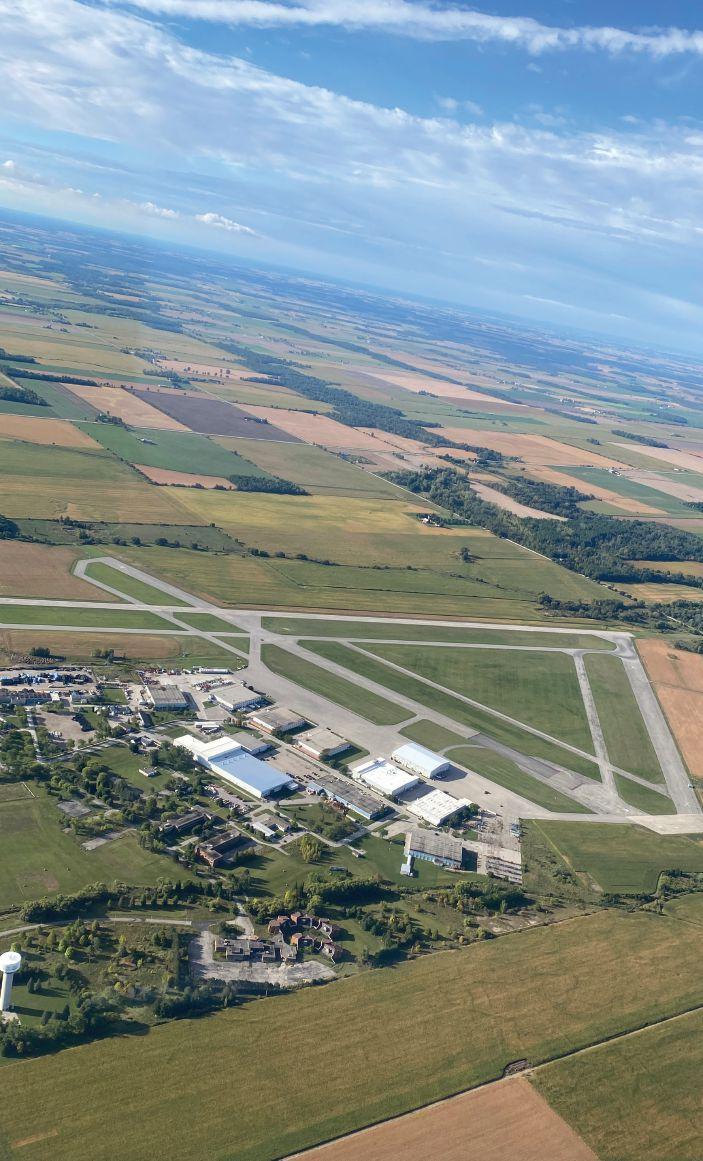
and other revenue for the municipality. In an emergency, such as a wildfire or medical evacuation, an airport can be lifesaving. There are other examples of facilities within municipalities, such as parks, playgrounds, parking lots and golf courses, which are enjoyed by only a few members of the community. All of which do not provide the same level of economic benefit that an airport can. Airports are closely aligned with other municipal infrastructure, including roads, sidewalks and utilities. Not everyone uses them, but they are there when needed and, therefore, the long-term health of an airport requires the same level of ongoing maintenance and funding to remain viable.
Possibly the greatest, and occasionally unforeseen, risk to an airport is that once they are gone, they cannot be replaced. Some municipalities, either intentionally or due to necessity, have closed their airports for various reasons, including economic strain and noise complaints. Airports, many of which were built around World War II for the war effort, were built at a time when large infrastructure projects were much easier to approve and complete. Additionally, land was more readily available back then. Also, airports are often constructed in locations that enhance
safety for the aircraft that use them. Factors such as approach and departure paths, weather, and prevailing wind conditions are taken into account.
When these airports are closed and replaced with buildings or other uses, they are never able to be replaced. The cost of building a new airport, from the price of land to construction and materials, far exceeds the resources of a municipality. Therefore, once an airport is closed, that economic potential is also lost.
Adding to the challenges of airports is the drive to create revenue, especially if they do not have businesses on the field. Many have turned to user fees, such as landing and ramp fees. While these may be suitable for larger airports, many small airfields have found that these fees are only manageable for transient aircraft operations. When applied universally to all aircraft, especially small private aircraft, they have the opposite effect. Smaller airports that have applied landing fees to all aircraft have experienced a significant decline in their usage. Small private aircraft, in particular, that are very budget conscious, will go the extra distance to visit a nearby airfield and take in its amenities if it means avoiding a landing fee. Additionally, flight schools and other businesses will avoid one
airport and may even relocate their operations to another if they are faced with such fees. This presents a challenge to airports in finding the balance between helping to offset their operating costs and still attracting tourism and regular use.
When these challenges are combined with an aging and possibly underfunded infrastructure, airports can find themselves in a spiral of limited revenue streams combined with increased maintenance and upgrade costs. If left unchecked, this can lead to the slow decline and eventual closure of an airport.
Ultimately, airports are like any other facility. They require regular use and support to remain viable. Embracing their potential, regular maintenance, and seeking aviation businesses and aircraft owners to establish a presence on the field, along with providing services such as hangars, a restaurant, and maintenance services, all contribute to attracting the aviation community. By attracting and supporting this community, airports present themselves as a safe investment opportunity, which leads to increased investment and support for the airport.
Airports are a major benefit, not a burden, for municipalities, and when supported, have the potential for significant economic returns. | W
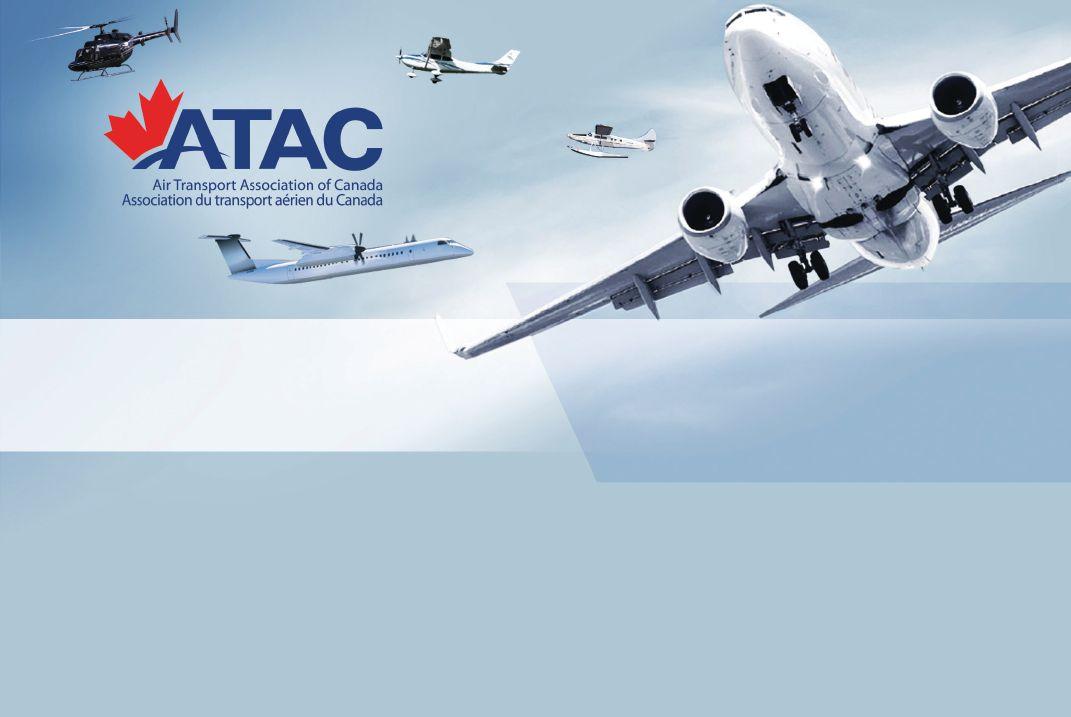
A major Industry Networking Event not to be missed!
TUESDAY, NOVEMBER 18
ATAC’s Canadian Aviation Conference and Tradeshow is the premier national gathering offering Canada’s best networking, learning, and sales opportunity for operators, suppliers, and government stakeholders involved in commercial aviation and flight training in Canada. For

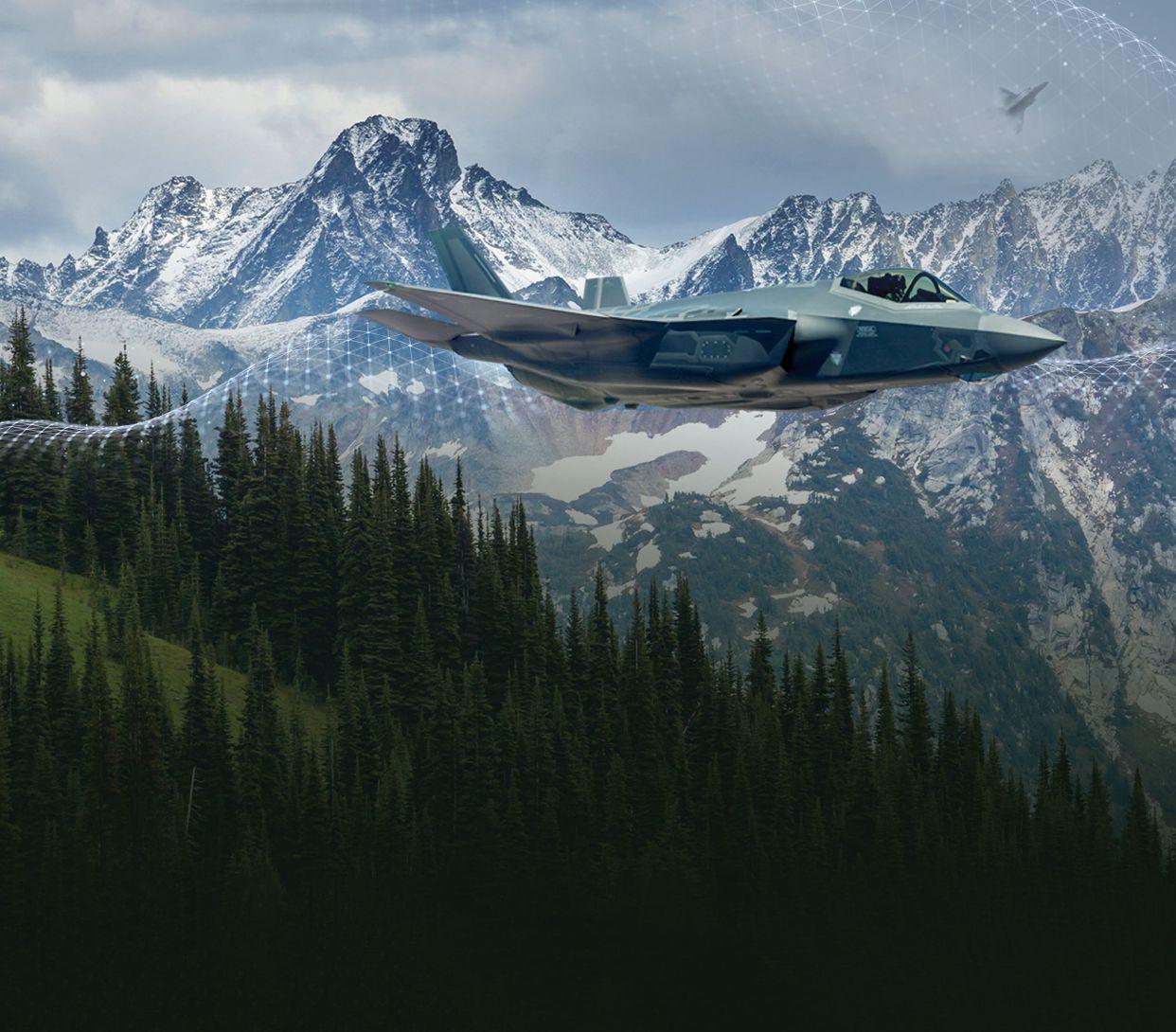




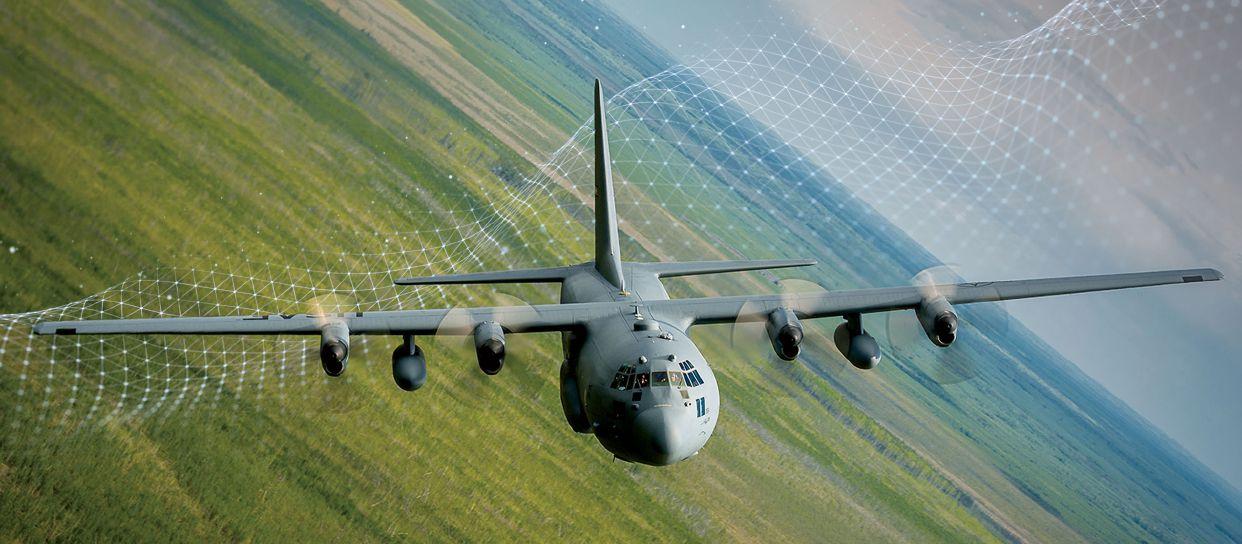

By Jessica Dizon Burns |
Imagine a room filled with Aircraft Maintenance Engineers and Technicians from around the world. The original Top Gun soundtrack blares as a video plays and it reads: “In 2012, the Aerospace Maintenance Council partnered with Snap-on to establish an elite event for the industry’s most talented technicians. Its purpose was to bring the aviation world together to celebrate these unsung heroes…. they succeeded… Today, people refer to it as the ultimate test of skills… the technicians call it… the AMC Competition!”
The room erupts in cheers as each of the 90 teams are called and introduced.
The Aerospace Maintenance Council Competition took place the first week of April and Centennial College was able to send the first Canadian college student team to this international event, held in Atlanta, Georgia.
On the Monday, orientation day, Delta Airlines offered all student teams a chance to tour its Atlanta tech-ops facility. The sheer magnitude of the facility was incredibly impressive for the students to experience and the tour left even a seasoned AME in awe.
“My favourite part of the experience was the people I got to know and the overall spirit of the competition. Everybody was there to have fun and make new connections,” Centennial team member Sebastian Tagliabue says.
Centennial sent five students and one alternate competitor to the competition. In a turn of events, 10 teams were unable to attend, so the AMC called forward all the alternates to form additional teams. Not only were we cheering on Centennial’s team, but we had a second team entered made up of two U.S. aviation schools, Epic Flight Academy and Tulsa Tech, and our alternate from Centennial College. We affectionately named the Team Maple Eagles, giving a nod to both our countries.
Day 1 of the competition was nerveracking. As much as we had prepared our students for how large this event was, they had first-day jitters as they took the stage to compete.
Team Air Canada like WestJet’s team had come to our college to help prepare our students. It was such a great collaboration


to see these two Canadian Tech ops teams, mentoring our six competitors. Both team coaches, Nuno Martins from Air Canada and Erik Burns from WestJet, were always seen cheering and encouraging our students through the whole competition.
Day 2 went smoothly, and our students performed incredibly well, especially in the precision aero removal and install of a turbine blade and the Barfield antenna testing event. Hands were mildly injured to the affectionately known event
called the blood box, but everyone was all smiles through it all.
We cheered on all the competitors, chatted about the differences in our schooling and our students were invited to apply to multiple companies.
So, the big question – how did we do? In one word, amazing. There is an AMC Peer Award, which gives all 90 teams the opportunity to recognize: knowledge, skill, integrity, and professionalism exhibited by competitors. This award allows the bestof-the-best to choose who is best among them. The award is the 10-foot AMC 2025 banner signed by all 450 competitors, which I am proud to report we won. We will proudly hang it at the Centennial College Downsview Campus.
“Competing at the AMC was such an exciting, rewarding and challenging opportunity and I’m so grateful to my professor, those who assisted in our training, and our sponsors who supported the team in anyway they could,” Centennial team member Jonathan Orizabal, explains. “We could not have done it without any of them.”
The students walked away with Snapon rachets, some won tools and gift cards, but all walked away with memories, gratitude and a deeper passion for our beloved profession. As five of our team members
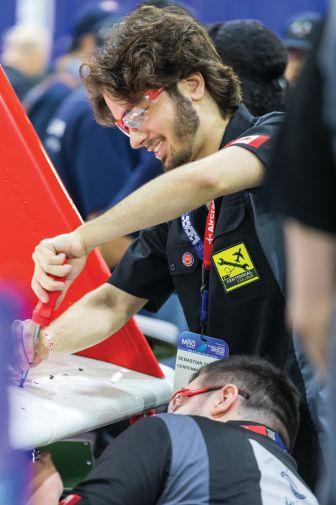
on and needs to be cultivated deeper.
The competition was livestreamed and we were told over 45 countries tuned in to watch, which has now put Centennial College’s Aircraft Maintenance Program on an international map.
It is so exciting that we have already been told Air Canada, Porter Airlines and Smart AMS plan on helping us get to the 2026 AMC. These AMOs understand why they need to make an investment for the future Canadian Aircraft Maintenance Engineers as shortages loom.
My hope is that multiple AMOs take this opportunity to sponsor, come to the school to mentor or perhaps even help with our in-house selection process for the next AMC competition. Getting involved allows AMOs to see the best from our school in action with both soft and technical skills.
Centennial has already garnered future AMC competition support from air canada and porter.
graduate this year, they have asked if they could come back and help coach and mentor the next team. Passing on what you have learned is what our profession thrives

All our first-year students are excited to now try out for next year’s team, as we hope we will be able to bring Centennial College to the 2026 competition in Orlando.
If you are interested in being a part of next year’s support, please reach out to me jburns@centennialcollege.ca to collaborate with the Centennial College team. | W


BY BILLIE FLYNN
In the ongoing debate about whether Canada should continue the purchase of the F-35, it’s essential to revisit how we got here in the first place. The 40-plus year old CF-18s are outdated, tactically irrelevant and unable to protect Canada and our sovereignty. Canada has limped along for many years with a fighter force that cannot survive in modern warfare. Canada’s future fighter competition was set to evaluate operational capability, economic benefit to Canada, airframe and lifecycle support costs. The F-35 won in all three categories.
The F-35 saga has been lengthy, marked early on by awkward management by a Conservative government, then Justin Trudeau’s election promise to cancel the purchase, and Liberal political interference throughout trying to prevent the F-35 from being selected as Canada’s future fighter. Had the U.S. Navy not scuppered the Boeing Super Hornet bid by refusing to respond to Canadian questions about classified issues, the Super Hornet would have finished second in scoring in the future fighter selection instead of being disqualified. While the Saab Gripen ultimately finished second, it was never truly a contender.
Operational Capability was the primary factor considered for any new fighter. Canada needs a future fighter capability that is multi-mission, able to fit into the NORAD modernization plan as well as seamlessly integrate with our western allies for coalition operations. One of the key takeaways from the war in Ukraine is that nations must be capable of engaging in peer-to-peer conflicts. To win, not just survive, Canada requires the most lethal and effective fighter that exists, capable of overcoming quantity with quality in future conflicts. That is what the F-35 brings to the RCAF.
Advancing capabilities matter, and 4th generation fighters will soon become obsolete. The F-35 enterprise allows Canada to benefit from technological advancements and shared costs with allied nations over the 40-plus years of life of the aircraft.
The second criterion was Economic Benefit. What would Canada gain from the selection of a new fighter? Canada’s partnership in the F-35 enterprise since its inception opened the door to Canadian firms allowing them to compete for opportunities. The franchise program of more than 3,000 F-35s over its lifetime promised to be a generational opportunity for Canadian aerospace businesses from the large firms to small and medium enterprises. Canadian manufactured components are included in every F-35 produced. It is estimated that nearly $23 billion of high-tech work and support for aerospace, electronics, communications, and manufacturing firms will be conducted by Canadians across the country, from British Columbia to Newfoundland, sustaining more than 5,000 jobs annually. No other aircraft program could offer a fraction of the benefit generated from the F-35 franchise in this category.
Finally, the third criterion was Cost. At $78 million per airframe, the F-35A was the most affordable aircraft. Additionally, over its lifetime, the F-35 benefits from the economy of scale provided by a fleet of over 3,000 aircraft supported by a global network of spare parts and maintenance services, resulting in lower support costs. The F-35 was determined to be the least expensive fighter jet, a conclusion corroborated by the decisions of the Swiss and Finnish
governments to select the F-35.
Moving forward, the new Prime Minister requested a study of the fighter fleet requirements. The number of 88 fighters was initially justified by the Liberal government to conduct simultaneous NORAD and NATO operations. The Liberals invented a capability gap that they hoped would justify a sole source purchase of 24 Boeing Super Hornets to make up that supposed gap. Ultimately, that procurement push failed due to the stunningly high price demanded by Boeing and the U.S. government, not the Bombardier versus Boeing business dispute as most think. The number 88 remains and even the Liberal government cannot walk back from it.
If Canada curtailed the F-35 purchase and picked the Saab Gripen as a second fighter, that pivot would be a stunningly expensive effort with no operational or capability benefit. Operating at twoaircraft fighter fleet would mean two tracks for technician training, two paths for aircraft sparing and repairs and two separate tracks for training pilots. There are barely enough personnel to support the transformation to the F-35; heaven knows where double the manpower needed would come from. Those people just don’t exist.
Housing the Gripen fleet in separate areas from the highly classified F-35 fleet would force the design and construction of additional hangers and maintenance bays incurring even more infrastructure costs than already projected. The Saab Gripen and F-35 have different capabilities and making a Canadian Gripen compatible with the F-35 and NORAD operations would be costly and time consuming with no guarantee of full compatibility. A less capable fighter such as Gripen E would not survive in a high threat Ukraine-like conflict which we all now realize is a very real possibility. We can always replace a fighter jet, but we can never replace our sons and daughters who we would send into combat in a jet that they could not survive in. After 40-plus years of the single CF-18 multi-role operations, we have learned how efficient it is to operate a single aircraft fleet; adopting a second, less capable fighter would defy logic.
I love the ingenuity of the Saab personnel and their products. In the Canadian case, a student wrote his capstone thesis for a

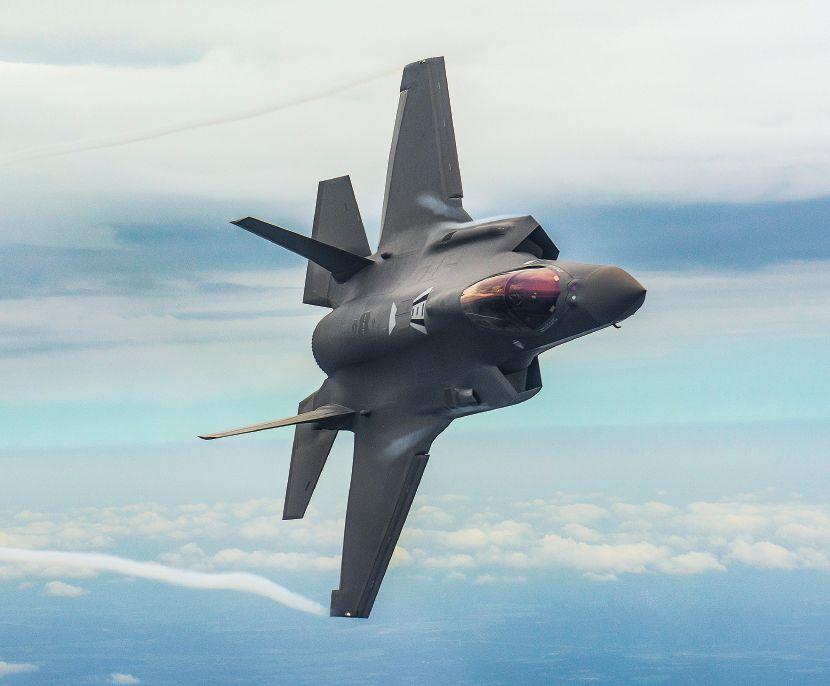
Canada has been involved in the U.S.-led F-35 Joint Strike Fighter Program since 1997, helping to develop what is described as a true fifth-generation fighter, which is expected to ultimately comprise a global fleet of 3,000 jets.
master’s degree in public policy proposing the Gripen as a choice for Canada’s next fighter. That essay propelled Alex McColl into the spotlight as if he was a sage knowing what Canada would need to replace the CF-18 and accomplish fighter missions in the future. It was not a product of a military thinktank supported by facts and data of future threats and capabilities needed to conduct missions in the future. This proposal has maintained strong support among Saab Gripen fans and mainstream Canadian media. And very sharp Saab marketing folks have run hard with McColl’s essay in the absence of any educated material. Conversely, classified war studies and analysis by educated military officers and technical experts outline the 5th Gen capabilities needed to survive in modern high threat conflicts. Only in Canada where there are precious few credible military journalists could a university public policy master’s degree thesis be considered credible research to support a multibillion-dollar procurement decision crucial for the future of Canada defence. At some point, the experts need to step in and bring sanity to the discussion in the Saab Gripen folly.
To shut down the urban myth, there is no F-35 Kill Switch controlled by Donald Trump. One of the premises of the F-35 program was that non-US nations could, for the first time in history, procure a platform that is effectively a spy plane. To protect the advanced technology of the F-35, which is significantly ahead of Chinese and Russian systems, the U.S. maintains the source code. Nations could join the F-35 program but they had to honour these rules.
Countries like Canada, Belgium, the Netherlands, Denmark, and the UK lack experience with highly classified programs like the F-35. Allowing them to manage these secret capabilities without any experience in the true black world would put the entire F-35 enterprise at risk.
It is true that potentially the U.S. government could withhold upgrades to the F-35. In many respects, it is no different than the vendor-controlled software like we have on our iPhones. If Apple chose, they could stop iOS or app updates, causing our iPhones to gracefully degrade over time. The F-35 could face a similar issue. If the U.S. withheld these upgrades, however, it would indicate a severe conflict, far beyond the point that we are at now. More likely, the U.S. could use non-kinetic methods to exert control over Canada, such as disabling GPS signals. It would only take the U.S. blocking out the GPS constellation signals over Canada to paralyze civilian and military air transportation and disable GPS functions.
Let’s review the timeline whereby Canadian F-35s could be disabled. Canada is not set to receive its first F-35 until late 2026, with the initial jets being delivered to Luke Air Force Base near Phoenix, AZ, for training Canadian F-35 pilots. The first Canadian F-35s don’t arrive in Canada until 2028 at the earliest, assuming the infrastructure projects have been completed, with final deliveries projected for late 2032. This timeline, with all 88 jets not delivered for another seven years, suggests that concerns about a hypothetical F-35 program freeze out by any individual or U.S. administration are premature.
The F-35 program involves global partners, with critical components sourced internationally, which are essential the entire enterprise, including the U.S. Air Force, Marine Corps, and Navy F-35s. Disruptions to any partner nation would affect the global fleet. For example, the Integrated Power Package (IPP), the emergency power and air conditioning system built in Hamilton, Ont., is vital for all F-35 operations. Relocating manufacturing of such components to the United States would take considerable time, as demonstrated by the extended process of shifting F-35 component production from Turkey after it was removed from the program.
The U.S. relies on Canada to help defend the continent of North America. NORAD defence involves coverage 360° around the continent from the Arctic to the southern border, Atlantic and Pacific coasts. Advanced threats like intercontinental ballistic missiles, hypersonic missiles and cruise missile attacks must be protected from all axes. Without Canada protecting the Arctic avenues of approach, the United States would be left completely vulnerable. That interdependency means that both nations are completely reliant on the other to protect our countries.

The CF-18s run out of service life by 2032, making some of them nearly 50 years old. Recall that I first flew the CF-18 back in 1984. Pivoting the fighter procurement plan would significantly delay the CF-18 replacement schedule and leave Canada without fighter protection for years while a new, second fighter would have to spin up a production program. Without RCAF
F-35s manning NORAD missions, which nation do you think would be tasked with sending its own F-35s to protect the North American continent?
While continental defence responsibilities will continue, they may do so without the bond that existed for over 150 years between the U.S. and Canada. Trust has been lost and with each American politician taking a jab

at the “51st State”, the Americans put another nail in the coffin of Canada-U.S. relations. We will at best be transactional business partners moving forward.
We have the difficult task of determining where the future relationship will lie, somewhere between, on one end, completely severing relations with the U.S. to the other end, which is potentially maintaining the status quo. Canadians must do the risk analysis to determine ultimately where we sit in between those two polar opposites. All of us are forced to do business with people who have screwed or backstabbed us at some point in time.
We return to why select the F-35 in the in the first place. Canada needs the most lethal, survivable and effective fighter that exists now and for the 40-plus years to come.
The F-35 is central to the NORAD modernization plan as the aerial platform that will deliver the weapons effects against future adversaries attacking the continent. Our NATO partners have demonstrated how their F-35s are seamlessly interoperable, all nations training against the advanced threats that Western nations may face. There are three points moving forward that Canada should follow:
1. Inform – It is critical that Canadian leaders are briefed about the highly classified capabilities of the F-35 so that they understand what this platform is meant to deliver. “You don't know what you don't know.” If the Minister of National Defence and senior politicians are unaware of the true 5th Gen F-35 capabilities, they will be unable to make informed decisions about the future RCAF defence needs of Canada.
2. Educate – Canadians are well read but are not historically interested in defence matters. Experts need to explain the F-35’s value in plain language to the public, addressing questions and explaining why it is not like legacy fighters other nations are trying to sell to Canada.
3. Commit – While shared continental defence will continue, they may do so without the bond that existed for over 66 years of NORAD. Even a decade of investment will not start to see fruition for at least five years. This is a generational change in attitude towards defence; Canada must not waver in the commitment to stand on its own.
Canadians are angry and deserve to be. But angry people make bad decisions. The rebuilding of Canada’s defence capability must follow through on the well-developed plan already in motion. Any emotional, political decision could do significant, permanent damage to Canada’s plan to recapitalise and pivot to more self-reliance. | W
—
At Perimeter Aviation, we connect cultures, communities, and careers.


Build a rewarding career in an environment committed to safety and supported by a leadership team of seasoned pilots. With advanced training programs, a variety of route options, and �exible single-day pairings, you'll have the freedom to progress at your own pace.
Whether transporting essential food and cargo, delivering critical medical supplies, or ensuring passengers reach their destination, you are connecting critical horizons across northern communities in Manitoba and Ontario.
From training to take-o�, your work makes a di�erence.
careers.perimeter.ca NOW
Direct Entry Dash 8 and Metro Captains
The most advanced single in its class
There have been many pioneering achievements in the field of aviation and the unique contributions from Pilatus Aircraft Ltd. trace back to December 16, 1939. On that date, a small maintenance business was established in Stans, in the heart of Switzerland, to work for the Swiss Air Force. Partly due to events taking shape around the world back then, the aviation industry was a hub of innovation and new development.
Pilatus has proven its dedication to Swiss innovation and quality countless times for more than 85 years and is today easily recognized as the manufacturer of the toughest and most versatile airplanes on the planet. Its formidable PC-12 platform stands testament to this achievement, with 2,094 aircraft now comprising the global fleet. In March 2025, Pilatus introduced a new model to the family in the PC-12 PRO, describing it as the most advanced single engine aircraft – “progressive, proven, professional”.
The PC-12 PRO has been reimagined with a completely new cockpit, innovative safety functions such as Autoland, Smart Glide and Electronic Stability, plus new interior finishes and color schemes. These enhancements ensure the brand-new PC-12 PRO is the most technologically advanced, best-performing and most reliable aircraft in its class.
With more than 2,000 PC-12s in the field, and over eleven million flight hours behind the ultra-reliable Pratt & Whitney Canada PT6 engine, experience makes a difference.
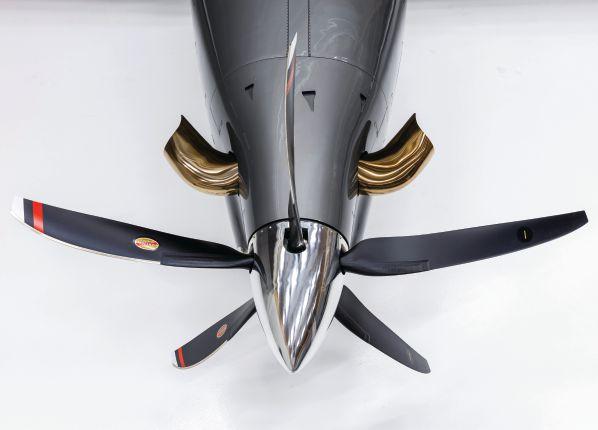
At the core of the new PC-12 PRO is its updated Advanced Cockpit Environment (ACE), powered by the Garmin G3000 PRIME Integrated Flight Deck. Fully customized by Pilatus, features such as Pilatus’ proprietary Cursor Control Device, track-based synthetic vision, and exclusive visual customization provide Pilatus pilots with superior solutions for ease of operation in all flight conditions. Three large, high-resolution touchscreen flight displays, supported by two seven-inch secondary touchscreen displays, provide twice the processing power and four times the Random Access Memory (RAM) capacity as the original G3000.
The completely redesigned cockpit also features ergonomic control yokes inspired by those in the PC-24, as well as a more sophisticated cockpit interior. Exterior visibility has been improved by removing the “Direct Vision” cockpit window frame. By integrating Garmin’s complete array of advanced safety features, including the emergency Autoland function, the PC-12 PRO provides the highest possible level of safety. Safety has also been further enhanced by improvements to the integrated Stall Warning & Protection System and the Electronic Stability and Protection function. The weather radar features a new and larger 12-inch antenna to provide even greater situational awareness in the cockpit.
The new PC-12 PRO cabin combines modern design with exceptional comfort and a timeless ambiance. Complementing the redesigned cabin, all-new cabinetry provides additional storage space. Entirely fresh PC-12 PRO colour schemes are also available – a bold fusion of innovation and digital aesthetics.
Cutting-edge interior and exterior designs reflect the essence of modern technology, with sleek patterns and futuristic finishes which give the PC-12 PRO a dynamic, high-tech look. Inspired by the design of the PC-24 Super Versatile Jet, the executive seats in the new PC-12 PRO feature full recline, taller seat backs, and even more seated headroom.
In a single-engine aircraft, a proven engine is the most important component. The PC-12 PRO is equipped with the latest version of the most reliable aircraft power plant ever produced, the Pratt & Whitney Canada PT6. With more than 60,000 engines in service and over 500 million flight hours, the PT6 family of engines has an unrivalled safety record.
The PT6 engine has already been thoroughly tested in more than 11 million flight hours in the PC-12. The PT6E-67XP leveraged by the PC-12 PRO produces 1,200 shaft horsepower in take-off and climb. The aircraft is rated for a maximum


cruise speed of 290 KTAS (537 km/h).
In combination with the fully automatic electronic engine and propeller control system (EPECS), the digital thrust control, or Autothrottle System, reduces the pilot’s workload, optimizes performance, increases fuel efficiency, ensures a quieter flying experience and protects against engine overlimit events. The PC-12 PRO also generates fewer CO2 emissions and is additionally ready for Sustainable Aviation Fuel (SAF), enabling a greener future without sacrificing performance.
Already certified, deliveries of the PC-12 PRO will start in the fourth quarter of 2025. Levaero Aviation is the exclusive Canadian Authorized Pilatus Sales and Service Centre. Pilatus, again building on the PC-12 legacy, is steering the enhanced aircraft to private and business aviation, as well as a wide range of missions, including air ambulance, special missions, private and corporate transport, fractional and charter operations. The PC-12 is renowned for its safety,
ABOVE
The re-designed flight deck of the PC-12 PRO features new style yokes and five large highresolution, touchscreen displays.
RIGHT
The PC-12 PRO includes Emergency Autoland, Electronic Stability Protection, Emergency Descent Mode, and Surface Watch.

versatility, and low operating costs, while providing a large cabin suited for patients and attendants needing aerial medical transport. The PC-12 PRO now cements these features with the most advanced single-engine aircraft in its class. Due to its short and rough field capability, the PC-12 PRO can take you places you’ve never been in a business aircraft. The PC-12 PRO needs just 2,485 feet (758 metres) of runway at maximum gross weight and can also operate on grass, gravel and dirt. This extra level of performance opens up your world of possible destinations to thousands more airports. The large standard cargo door allows you to bring unique cargo on all of your missions. With its pallet-sized cargo door, combined with a flat floor, and forward lavatory, no other single-engine turboprop provides more flexibility and space to bring everything you need. Unlike most business aircraft, all of your cargo travels within the temperature-controlled and pressurized cargo space, and remains accessible during flight.
BY PHIL LIGHTSTONE
Remotely Piloted Aircraft Systems, drones, can be surprisingly small relative to the function they provide. Under more strategic names like Advanced Air Mobility (AAM) and Urban Air Mobility (UAM), these unpiloted aircraft can also be large enough to carry a pilot even if it is preferred to control them from the ground. Without doubt, once regulatory framework catches up with technology, Artificial intelligence (AI) systems will provide the guidance and separation needed to increase the number of unpiloted aircraft being controlled in the airspace. The challenge for aviation will be controlling the exponential growth of these aircraft and keeping the overall operating environment safe.
Amazon’s Prime Air is now using its MK30 drones to deliver packages in the Tolleson, Arizona, area. The MK30’s delivery constraints are: item weights less than five pounds; and the drone can drop off the package at designated areas near the address in 60 minutes or less. “It is the first drone we have developed from the ground up using a requirements-based process, including more stringent requirements that will allow us to eventually reach a half billion customers annually,” Stephen Wells, Chief Project Engineer, Prime Air, said. “We designed it with aerospace levels of reliability and redundancy.” The MK30 went through 1,070 flight hours and more than 6,300 flights to ensure safety and reliability. The MK30 received FAA approval to begin operations to customers in October 2024 included the ability to fly Beyond Visual Line of Sight (BVLOS), using Prime Air's on-board Detect and Avoid system.
UAM, the primary term for air taxi-like eVTOLs, will drive a use case for pilotless aviation. Development activities in China
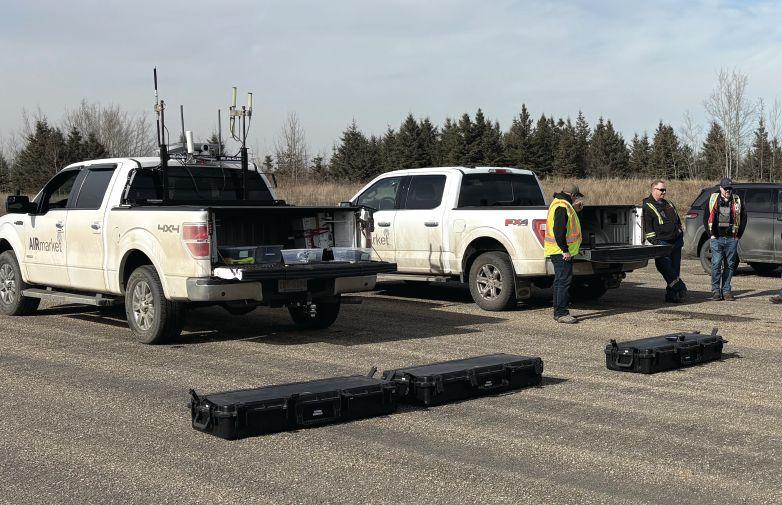
saw the first pilotless eVTOL become certified in 2023. In 2024 and Q1 of 2025, flights have been on the increase with the operators gaining more experience and flight data. China has authorized two operators to begin commercial flights, allowing the public to take air taxis.
Brazil is also a UAM pioneer, with its existing high tempo and density of helicopter operations servicing São Palo and Rio de Janeiro. With rampant carjackings, kidnappings and robberies, helicopters supporting UAM have gained traction with the populace. The Advanced Air Mobility Institute (AAMI) states: “Eve Air Mobility, Revo, an Advanced Air Mobility solution provider in Brazil, along with its holding company, Omni Helicopters International Group (OHI), have completed a urban air traffic simulation in São Paulo as part of their collaborative effort to establish the AAM framework in the metropolitan area. The exercise, employing Revo’s helicopter fleet and Eve’s Urban Air Traffic Management (Urban ATM) program, called Vector, was conducted at Revo’s flight control facility in São Paulo.”
Dan Sloat, Founder and President AAMI reports: “There are strong drivers for the widespread adoption of UAM, eVTOLs and UA, however, public and political misconceptions will slow the deployment in the near future. Major international events like the Olympics and World Expos (Fairs) creates a clear finish line for regulators to finalize the standards and integration of these pilotless aircraft into the NextGen Air Navigation platforms. Afterall, the World Fairs were created to showcase new technologies impacting lifestyle and culture.”
AAMI’s Canadian liaison, Brie O’Sullivan, adds: “We are focusing on hydrogen based aviation technologies because we believe it’s crucial for sustainable development. Working with indigenous communities has shown us the real potential of medical delivery drones to transform healthcare access.”
ICAO formed the Remotely Piloted Aircraft Systems Panel (RPASP) to coordinate and develop ICAO Standards and Recommended Procedures (SARPS), Procedures and Guidance material for RPAS. Its goal is the creation of policy and procedures to ensure a safe, secure and efficient integration
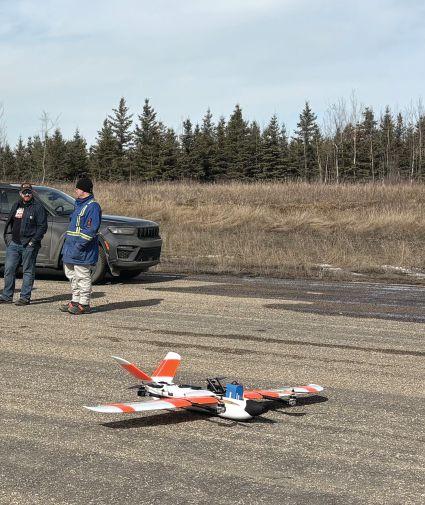
into airspace and aerodromes. Panel members include subject matter experts in air traffic management; airworthiness; detect and avoid (DAA) or surveillance systems like airborne collision avoidance (ACAS); ground proximity warning systems or other safety nets; human performance; personnel licensing; RPAS operations; safety management systems; and telecommunications for C2 Link and air traffic control. ICAO continues its work to define current state-of-the-art for UAS Traffic Management (UTM) and is using that information to develop the framework and core principles of UTM. ICAO recently published its Common Framework with Core Boundaries for Global Harmonization, providing states with a framework and core capabilities of a typical UTM system.
On February 13, 2019, the Federal Aviation Administration (FAA) and the Office of the Secretary of Transportation (OST), Department of Transportation (DOT) published a notice of proposed rule to allow operations of small, unmanned aircraft over people in certain conditions and operations of small unmanned aircraft at night without obtaining a waiver. It would require remote pilots to present their certificate Integration into a cohesive air navigation
system is one step to ensure that piloted and unpiloted aircraft systems can cohabitate in the same airspace, ensuring that mid-air collisions are avoided which could lead to the loss of life. While midair collisions are rare, they do happen. In 2021, a York Regional Police (YRP) drone collided with a Canadian Fliers Cessna 172 on a training flight. With a student pilot and instructor on-board, while on final to runway 15 at the Toronto Buttonville Municipal Airport (CYKZ), the C172 sustained damage to the engine cowling and fuselage. Had the drone strike been two or three feet higher, the drone could have penetrated the windshield injuring the pilots and possibly causing loss of control (at 400 feet AGL).
As described in the event’s Transportation Safety Board of Canada (TSB) investigation report, A21O0069: “Because of its limitations, the see-and-avoid principle cannot be used as the sole means of preventing aircraft collisions when operating under VFR; if pilots do not consult established checklists before and during flight operations, there is a risk that checklist items deemed critical to the safety of the flight will be omitted; YRP policy does not require that visual observers be trained crew members, and the RPA pilot did not brief the visual observer on his role and responsibilities before the operation. As a result, the visual observer was not aware of the requirement to maintain VLOS with the RPA, nor was he trained in visual scanning techniques or aircraft identification; In the moments leading up to the collision, the pilot of the RPA likely was task saturated, the visual observer was unaware of the requirement to maintain VLOS, and the Cessna pilots’ active scan was unsuccessful; consequently, the conflict went unrecognized and the 2 aircraft collided; if remotely piloted aircraft operators who plan to operate in controlled airspace do not communicate their flight intentions with, and receive authorization from, the air traffic services provider, there is an increased risk of conflict or collision with another aircraft.”
From the Canadian perspective, since 2019, the team at AIRmarket has been collaborating with Transport Canada (TC) and NAV Canada; culminating with the formation of the RPAS Traffic Management Action Committee (RTM AC) focusing on the creation of the frameworks (technology, regulatory, standards, etc.) to facilitate the explosive expansion of RPAS into the Canadian air navigation system. In 2020, a call for the Phase 1 RTM Trials proposals was released by TC. Of the 26 respondents, two were selected to implement specific aspects of their RTM solutions facilitating BVLOS. AIRmarket has delivered the Energy UTM Trails (EUT)
proof-of-concept as part of Phase 1 Trials, which includes: FLYsafe; SkyLink RTM; 4G cellular private network (Telus); CBand licensing and transmission/reception radio hardware; cloud based IT platforms; connectivity to NAV Canada’s systems; RPAS aircraft; command centre and remote pilot “bat cave”. This phase of trials delivered over 6000 kilometres and 60 hours of BVLOS operations over a period of three-plus years.
In 2023, Phase 2 RTM Trials proposals were released by TC, for which the AIRmarket Alberta RTM Trials (iART) was selected. This next phase utilizes a reference RPAS aircraft (Censys Sentaero) that has the following characteristics: weight 9.8 kg; maximum range is one hour (43 minutes has been their typical mission); and air speed of 33 knots. With flight testing starting in spring of 2024, more than 150 BVLOS flights have been conducted to date. April 2025’s current focus has shifted to the 0ilsands region of Fort McMurray, Alta., with several flights done. AIRmarket is using its experience to document anomalies and determine a resolution path.
“BVLOS drone operations in the Alberta Oilsands region represents significant opportunity and unique challenges, as we are finding out,” Lindsay Mohr, Founder and CEO AIRmarket, says. “During the recent week of BVLOS flight operations, we found the RPAS was not holding a consistent altitude above ground in certain areas. After investigation, our team has associated the fluctuations with the fact that the aircraft was flying over reclaimed oil sand mine sites. The terrain database [onboard the aircraft] was using older data from when the mine was active, which resulted in aggressive terrain changes. This one simple unexpected outcome, provides insight on the need for trials and challenges faced by industry to integrate the crewed and uncrewed aviation sectors.” AIRmarket has received funding from the Government of Alberta and is starting to focus on the Drone as a First Responder program with the County of Strathcona.
The FAA conceived a system called Traffic Awareness Beacon System (TABS), codified into TSO-C199 in 2014. The TSO states that TABS devices are intended for voluntary equipage on aircraft exempted from carrying a transponder or ADS-B equipment, such as gliders, balloons and aircraft without electrical systems. TABS devices do not meet the transponder or ADS-B requirements. TABS equipment built to the minimum requirements of this TSO will enable an aircraft to be visible to other aircraft equipped with: Traffic Advisory System (TAS); Traffic Alert and Collision Avoidance System I (TCAS I); Traffic
Alert and Collision Avoidance System II, (TCAS II); and ADS-B IN capability.
A few of years after the release of the TABS standards, the UK CAA had the same idea of lowering the cost barrier to equip with technology that would enable SEE and BE SEEN. Electronic Conspicuity (EC) was its terminology, but the British lowered the bar even further with EC. Instead of coming up with a specification that was still interoperable with current surveillance systems, they looked ahead to what was coming and placed bets on ADS-B.
EC refers to the utilization of multiple wireless technologies, e.g. ADS-B, cellular LTE and 5G; Mode S transponders; FLARM; metropolitan WiFi networks; and C-Band; to name a few. The approach utilizes an appropriate electronics payload installed in the UAV to receive and transmit on a variety of frequencies (wireless networks) to the other drones or aircraft. The utilization of ground-station technology would be required to facilitate the retransmission of data in a format and frequency which legacy aircraft (equipped with a minimal baseline) would be able to ingest, inspect and create an action (couple to an autopilot). Fundamentally, the technology would provide a detect-and-avoidance solution designed to ensure that two airborne
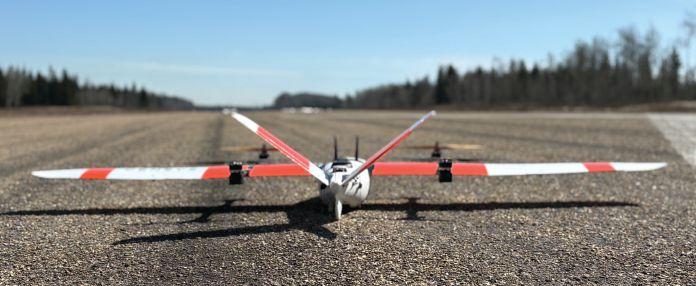
targets would not collide with each other. In the broader picture, critical to this capability is a minimum aircraft equipage.
On April 1, 2025, TC expanded Canada’s drone regulations: new pilot and operator certification for lower-risk BVLOS operations; expanded privileges for advanced pilots to fly sheltered operations and extended visual line-of-sight (EVLOS) operations; new rules for flying medium drones (over 25 kg up to 150 kg) within visual lineof-sight (VLOS); new technical standards for drones and any supporting systems flying advanced, complex or special flight operations; new requirements for flying microdrones at advertised events; and new and updated fees for services provided by TC. The new BVLOS and EVLOS or Sheltered operations come into effect on

November 4, 2025. Sheltered operations refers to operating a small drone close to a building. Sheltered operations requires flying the drone: more than 30 metres (100 feet) away from people not involved in the operation; no greater than 30 metres (100 feet) above the structure; and less than 61 metres (200 feet) horizontally from the structure. Canada’s low risk BVLOS are restricted to: main in uncontrolled airspace; stay below 122 metres (400 feet); stay away from airports and aerodromes; if you are flying a small or medium drone, you may operate at least one km away from a populated area; if you are flying a small drone, you may also operate over a sparsely populated area or less than one km from a populated area.

Integration of RPAS and UAMs into next-generation navigation systems begins with connectivity, identification, tracking, and registration. uAvionix has been innovating in this space since the development of its skyBeacon UAT ADS-B OUT technology. More recently, they have augmented their UAV ADS-B OUT transponders (ping series of hardware) with SkyLine, a technology solution providing mission assurance through centralized management of Command and Control (C2) infrastructure across a diverse frequency and radio types. SkyLine is a cloud-based C2 network that combines fleet management, network health monitoring, detect-avoid and seamless make-before-break roaming between multiple radio networks and ground stations. The system utilizes C-Band (aviation protected frequencies), LTE (licensed spectrum) and ISM (license free spectrum) to create a cohesive radio communications network. This multi-spectrum network allows BVLOS operations for 100-plus miles at 10,000 feet. The system analyzes and adjusts connectivity while airborne eliminating the possibility of a loss of link scenario.
Over the next decade, evolution of battery and electric motor technologies will drive the number of RPAS and UAM systems sharing the airspace. As RPAS technology becomes faster, lighter and in some cases less expensive, new airspace management systems will have to be designed to scale.






























BY PHIL LIGHTSTONE
Aviation is facing a fuel challenge, with exponential price increases over the past decade, pressures over the use of 100LL, and the overall awareness for the need to cut back on carbon emissions, among other issues. These pressures pushed massive investment into the electrification of aircraft. While fossil fuels provide the greatest power-to-weight ratio, batteries having a shorter lifespan and require the mining of scarce minerals like lithium.
Research and development into hydrogen fuel cells is picking up more attention in aviation. After all, hydrogen is plentiful. Hydrogen startup Hydroplane reports: “In 2018, the aviation sector CO2 output was 1.04 billion tons with a four per cent growth per year since 2010. The impact of switching global air travel to hydrogen power will be less than 50 billion tons reduction of CO2 by 2050 if the market is fully adapted to our proposed technology.”
Hydrogen fuel cells are not a 20th century technology development with activities that can be traced back to the early 1800s. Milestones include the invention of the gas voltaic battery by Sir William Grove in 1839, the development of the Bacon Cell by Francis Bacon in the 1930s and the use of fuel cells in NASA’s Apollo space missions. Honda, Toyota and Hyundai have developed fuel cell powered automobiles (FCEVs) for commercial sale and lease. By the end of 2019, roughly 18,000 FCEVs were on the road. A hydrogen fuel cell utilizes a process which takes liquid hydrogen, creating electricity and pure water.
Toyota is creating a network of hydrogen-equipped gasoline stations through a joint venture with Shell. With point of delivery infrastructure in place, gasoline stations will simply need to equip with hydrogen fuel delivery pumps. The Canadian Fuels Association reports that there are 11,713 retail gasoline stations in Canada
and that 517 now have electric charging stations. Natural Resources Canada reports that there are 65 hydrogen fueling locations in Canada and the U.S.
Hydrogen production utilizes large-scale electrolysis works on the same principle as those electrolysis experiments in physics and chemistry lessons, in which two electrodes are suspended in a water bath. In an electrolyser, water is broken down into its components, hydrogen and oxygen, by an electrochemical reaction. In contrast to the electrolysis experiment at school, however, a membrane is used instead of electrodes. Current is passed through this membrane into the water, producing hydrogen at the negative cathode and oxygen at the positive anode. This process takes place in a cell, hundreds of which are stacked on top of each other in such a way that they produce the required amount of hydrogen as economically and effectively as possible.
There are many participants in the aerospace industry investing capital into hydrogen powered aircraft. During its 2025 summit, Airbus provided an update on its roadmap to pioneer the future of commercial aviation in the decades to come, outlining plans to prepare a next-generation, single-aisle aircraft that could enter service in the second half of the 2030s, as well as its revised ZEROe project roadmap to mature the technologies associated with hydrogen powered flight.
At the summit, Airbus reconfirmed its commitment to bring to market a commercially viable hydrogen aircraft and presented some of the key technology building blocks that will enable the advent of a fully electric, fuel-cell powered commercial aircraft – a pathway which stands out as the most promising, following years of research into hydrogen aviation.
Airbus states: “Hydrogen has been safely and effectively used in the space and automobile industries for decades. Today’s challenge is to adapt its use to commercial aviation. Hydrogen’s extremely high energy-to-mass ratio makes it very appealing for aerospace applications, providing the potential for significantly cutting emissions. The main hurdle is its low ambient density, which means it needs to be stored on the aircraft at -253°C. This requires advanced storage technologies to make hydrogen practical for use on an aircraft.”
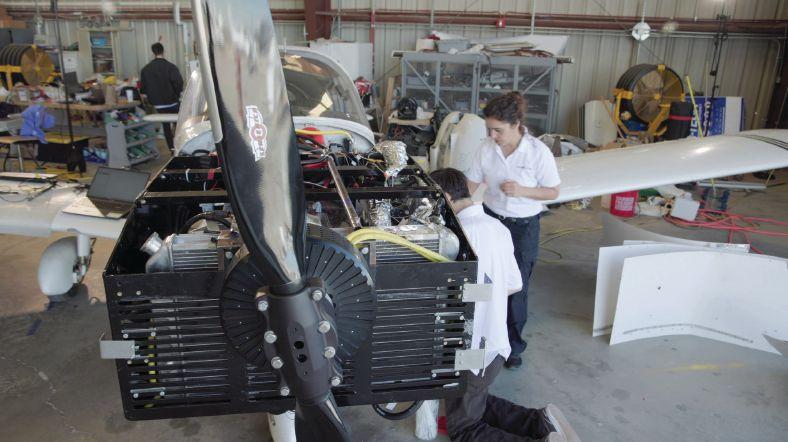
Airbus Head of Future Programmes, Bruno Fichefeux, adds: “Hydrogen is at the heart of our commitment to decarbonize aviation. While we’ve adjusted our roadmap, our dedication to hydrogen-powered flight is unwavering. Just as we saw in the automotive sector, fully electric aircraft powered by hydrogen fuel cells have the potential in the longer term to revolutionize air transport for the better, complementing the sustainable aviation fuel pathway.” These technologies were notably showcased as part of a proof concept of a hydrogen aircraft powered by four, 2-megawatt electric engines, each driven by
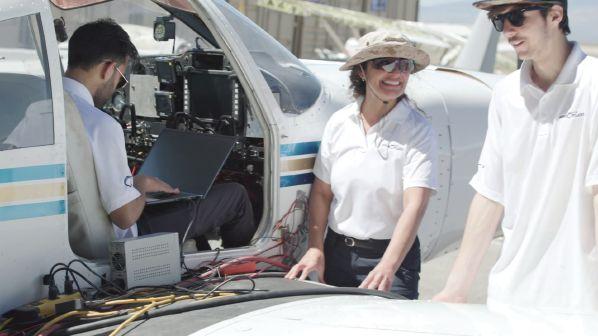
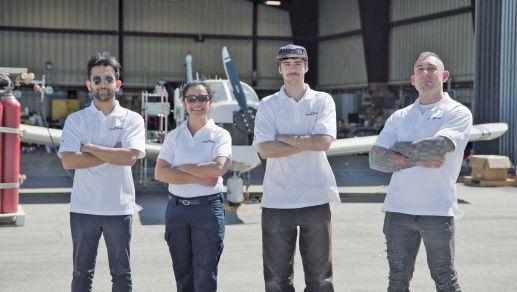
a fuel cell system that converts hydrogen and oxygen into electrical energy. The four fuel cell systems would be supplied via two liquid hydrogen tanks. This concept will continue to be refined over the coming years as additional tests will help mature the technologies associated with hydrogen storage and distribution, as well as with the propulsion systems.
Airbus Head of the ZEROe Project, Glenn Llewellyn, outlined more of the roadmap, “Over the last five years, we have explored multiple hydrogen-propulsion concepts, before down-selecting this fully electric concept. We are confident it could provide the necessary power density for a hydrogen-powered commercial aircraft and could evolve as we mature the technology. In the coming years, we will concentrate on advancing the storage, distribution and propulsion systems, while also advocating for the regulatory framework needed to ensure these aircraft can take flight.”
In 2023, Airbus successfully demonstrated a 1.2MW hydrogenpropulsion system, and in 2024, end-to-end testing of an integrated fuel cell stack, electric motors, gearboxes, inverters and heat exchangers was completed. To address liquid hydrogen handling and distribution challenges in flight, Airbus, in collaboration with Air Liquide Advanced Technologies, developed the Liquid Hydrogen BreadBoard (LH2BB) in Grenoble, France. Integrated ground testing is planned for 2027 at the Electric Aircraft System Test House in Munich, Germany, combining the propulsive bench and
hydrogen distribution system for comprehensive system validation.
On a more modest scale, Hydroplane was created in 2020 by Dr. Anita Sengupta, formerly of NASA with grants from the U.S. Air Force and Navy. Further funding was obtained in November 2024 through from a U.S. Army grant to develop Hydroplane’s fuel cell powerplant for aerial vehicle electric propulsion.
“During this activity we will define performance and operational capabilities for Army use cases of our hydrogen fuel cell powerplant technology,” Dr. Anita Sengupta, CEO Hydroplane, says. “The environmental havoc which the battery industry inflicts on the planet is underestimated and misunderstood by the public. Recycling batteries as they are, is the next big problem, akin to the issues surrounding spent nuclear fuel rods. On the other hand, hydrogen fuel cell technology provides a completely green solution inclusive of the manufacturing process.”
Sengupta was expecting the first flight of Hydroplane’s Cherokee 180 test bed in late 2025. Hydroplane’s hydrogen fuel powerplant benefits include: electric aviation with regional range; no battery charging required; zero carbon emissions; longer flight time and further range than other battery powered engines; low operations and maintenance costs; reduced noise signature; designed to be a direct replacement of certain aviation internal combustion engines (ICE); and up to 1MW power plants with competitive range and installation cost. While 100LL weights six pounds per U.S. gallon (USG), liquid hydrogen weights 1.3 pounds per USG. In the case of Hydroplane’s Cherokee test bed, the technology has the following characteristics: electric powerplant delivers 270 hp; estimated three hours endurance; range of 500 km; 176 kW continuous power from the electric engine; useful load will be the same as the ICE equipped aircraft; and TBO between 2,000 and 3,000 hours. The current version of the powerplant is named G1. Its G2 power plant is expected to have more horsepower and weight less, with an expected cost between US$35,000 and US$55,000.
In 2022, easyJet and Rolls-Royce set a world first by successfully running a modern aircraft engine, the Rolls-Royce AE2100, on 100 per cent hydrogen at Boscombe Down, UK. Collaborating with easyJet and NASA, Rolls-Royce announced in July 2024 it was breaking ground on a unique engine test site to perform outdoor full-scale gas turbine hydrogen testing at NASA’s Stennis Space Center in Mississippi. This program is part of Rolls-Royce’s goal to develop technologies contributing to net zero by 2050. The testing will demonstrate the integration of technologies required for 100 per cent hydrogen fuel operation on a modified Rolls-Royce Pearl 15 engine. Tata Consultancy Services (TCS) is providing engineering expertise to Rolls-Royce to achieve this milestone.
Rolls-Royce Chris Cholerton, President Civil Aerospace, RollsRoyce said: “We are pioneers of power and our new hydrogen program puts us in a great position to pave the way to make hydrogen and hybrid-electric systems a reality. Combined with our work on Sustainable Aviation Fuel and further gas turbine efficiency, we are making real progress on the hard yards of research and development towards making Net Zero flight a reality.” Its hydrogen aircraft program will conduct a series of engine tests to prove that hydrogen fuel can safely and efficiently deliver power for small- to mid-size aircraft from the mid-2030s onwards.
It is only a matter of time and funding before airport infrastructure is upgraded, which could include the retrofit of up to 1,550 Canadian and 19,859 U.S. aerodromes, to support both electric and hydrogen powered aircraft. | W
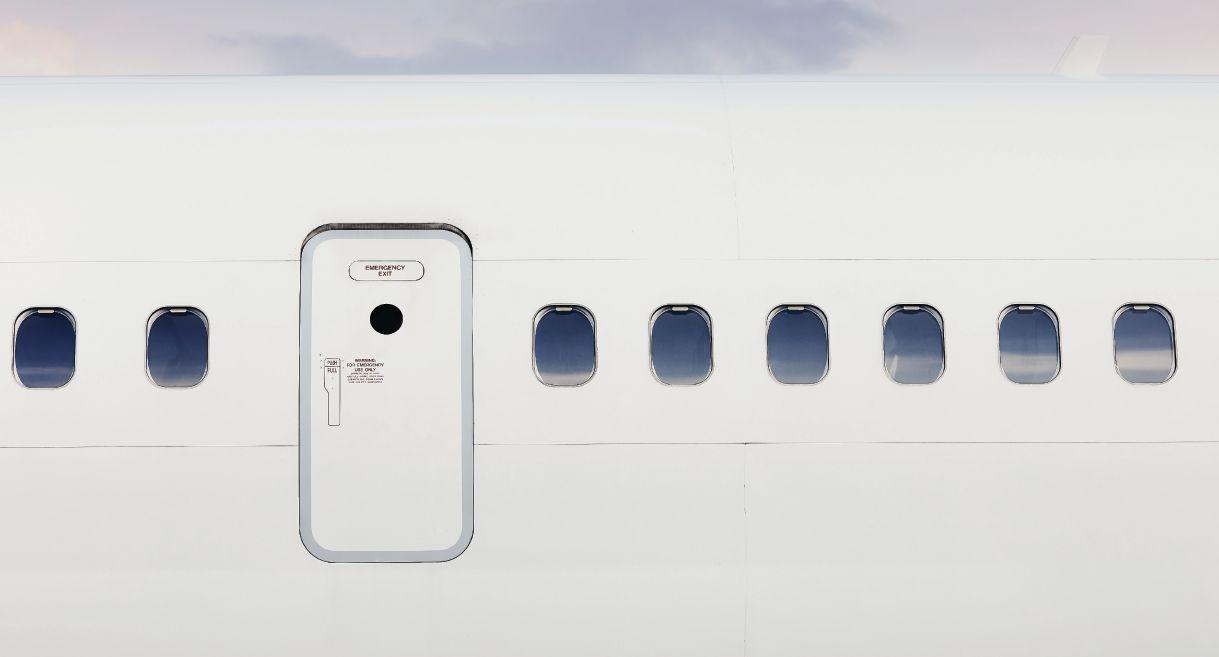
BY THOMAS WALKER AND HAMED KHADIVAR
Air travel is statistically one of the safest modes of transportation. But a series of recent airline accidents around the world has rattled the industry and the public – leading to a surge in Google searches for “is flying safe” in recent weeks.
The number of fatal airline accidents jumped from just one in 2023 to at least seven in 2024 – drawing renewed attention to aviation safety. We’re only a few months into 2025 and multiple fatal aviation incidents have already occurred worldwide. This has only reinforced concerns about ongoing safety challenges. These incidents have revealed how ongoing safety violations, infrastructure oversight failures, shortcomings in pilot training and corporate
decision-making issues can have deadly consequences.
Although airline safety has actually improved over the past few decades, these recent events are a stark reminder that constant vigilance is key. Aviation safety is not just about technology or pilot skill – it’s also about corporate decision-making, oversight and leadership. What happens in the boardroom can influence what happens in the cockpit. In our own study, which used data from 70 countries collected between 1990 and 2016, we found a link between the stability of an airline’s executive board and airline safety outcomes.
Our study found that airlines with weak governance, high executive turnover and overextended directors tend to have more accidents. In contrast,
airlines with stable, experienced leadership saw fewer. Many of last year’s aviation accidents can be attributed to such organizational failures. For example, in Nepal, a catastrophic passenger plane crash that killed 18 people in July 2024 was attributed to the airline ignoring cargo weight limits and speed guidelines.
In Brazil, the deadly crash of a passenger airplane en route to São Paulo, Voepass Flight 2283 in August 2024, was caused by the pilots underestimating severe icing conditions. The pilots’ actions indicate possible training gaps. In South Korea, the Jeju Air crash in December 2024 that killed nearly 200 passengers was attributed to the airline rushing an emergency landing under unsafe conditions. This exposed flaws in risk assessment.
Poor airline governance can also pave the way for financial distress, which is another factor linked to increased risk of accidents. In our global aviation study, pilot errors and mechanical failures accounted for
about 75 per cent of airplane accidents – underscoring how board decisions around training, maintenance and resource allocation directly influence safety outcomes.
When airlines face financial strain, they may delay maintenance, reduce crew training or push tighter schedules – all of which erode safety over time.
The 2009 Colgan Air crash in Buffalo and the 2013 Asiana Airlines crash in San Francisco were both tied to pilot fatigue and inadequate training. Both of these issues are directly influenced by airline policies. In fact, one study found that fatigue and scheduling pressures can significantly increase accident likelihood when airlines fail to set and enforce effective rest and training standards.
Regulators also play a key role in preventing aviation disasters. But when oversight weakens or regulators become too lenient, safety can suffer. The Boeing 737 MAX crisis that occurred between 2018 and 2019 is a prime example. Two fatal
Boeing crashes, which killed 346 people in total, were traced to design flaws that regulators failed to catch. Boeing was under intense pressure to compete with Airbus and downplayed safety risks. The United States Federal Aviation Administration (FAA) also relied too heavily on Boeing’s own safety assessments.
Last year, Alaska Airlines Flight 1282 brought Boeing back into the spotlight. A midair panel blowout on a 737-9 MAX forced an emergency landing, leading to the FAA grounding the entire MAX 9 fleet. Investigators found several fastener bolts missing from the aircraft’s mid-cabin door plug, raising concerns about quality control failures in Boeing’s production process. Regulatory failures can also extend to airport safety and air traffic control. The Haneda Airport runway collision in Japan in early 2024 exposed complacency in ground safety procedures. Similar unaddressed
runway safety issues were also a factor in the South Korea’s Jeju Air crash.
No system is perfect, but there are many proactive steps industry leaders and regulators can take to minimize future risks, including:
• Strengthening board oversight: Airlines should ensure credible aviation safety expertise is present in top leadership roles. This ensures that critical safety considerations reach the highest levels of decision-making, rather than being siloed within lower management tiers. Additionally, forming dedicated safety committees can promote ongoing oversight and proactive discussions around potential risks.
• Prioritize stable leadership: Frequent executive turnover can lead to inconsistent safety policies. Strong leadership fosters a culture of safety.
• Improve pilot training: Airlines must invest in advanced simulator programs
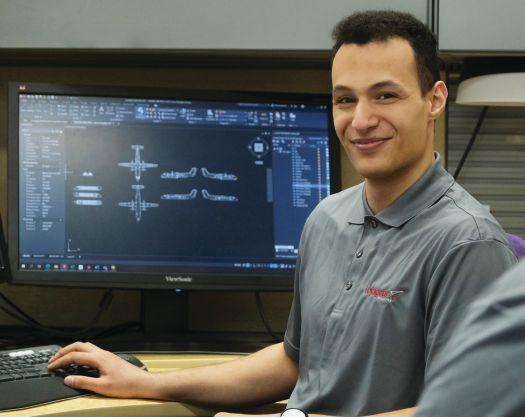
and continuous training to ensure crews are prepared for unexpected scenarios.
• Targeted oversight for highrisk carriers: Regulators should conduct stricter inspections on airlines showing financial distress or repeated safety violations.
• Encourage transparency: A non-punitive safety reporting system would allow pilots, engineers and ground crew to flag risks before they escalate.
Flying remains extraordinarily safe – and is statistically safer than driving. Between 2000 and 2022 in the U.S., 885,250 people were killed in passenger-vehicle accidents – compared with 12,644 fatalities in aviation.
But trust in air travel is built on more than just statistics. The
public expects airlines and regulators to take proactive steps to prevent avoidable disasters. Every crash investigation has uncovered lessons that, when they’ve been implemented, can make flying even safer. The challenge is ensuring those lessons lead to lasting reforms –not just temporary fixes.
The public can also play a role in holding industry leaders accountable. They can do this by demanding transparency, supporting safety-focused policies and questioning whether cost-cutting is coming at the expense of safety.
Safety improvements shouldn’t have to come about only as a result of tragedy. It’s time for the industry to start taking proactive changes now to improve aviation safety and prevent tragedies in the future. | W
This story was originally published by The Conversation. Thomas Walker is a Professor of Finance, Concordia University. Hamed Khadivar is an Assistant Professor of Finance at Université du Québec à Montréal. Pedram Fardnia, Data and Analytics Lead at BOXX Insurance, also contributed to this story.



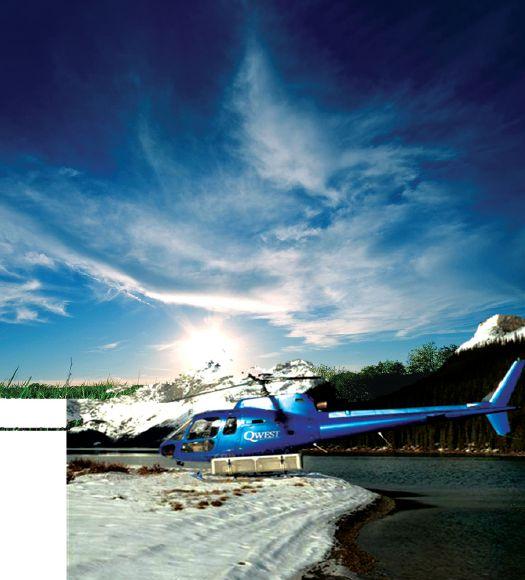

We are optimistic that this new government, led by a new and first-time Prime Minister, will bring about long-awaited change that will help Canadians prosper and maintain an enviable quality of life.
We certainly understand and wholeheartedly support that the government is currently focused on dealing with the ongoing trade dispute with the United States. However, amidst the political and economic uncertainty, we urge the government not to overlook key issues of concern which threaten the aviation services Canadians have come to enjoy and depend on.
ATAC shared its top five aviation issues with the four main party leaders, asking for consideration when drafting their platforms for the April 28th federal election. We have provided these inputs for the elections of the past twenty years. At best we have only received an acknowledgement of our submission and sometimes long after the election. Regardless, it is critical that we keep reminding governments of all levels that aviation is not only a key economic enabler and essential in this country’s connectivity, both domestically and internationally, but also an essential lifeline for many communities that depend on it.
New ministers receive Mandate Letters from the Prime Minister identifying his priorities in terms of policies and action. Unfortunately, the Mandate Letters received by Ministers since 2015 have largely overlooked aviation. This omission has ranged from total absence of any aviation support in Minister Garneau’s letter to unfairly strengthen regulatory control and reinforce Airline Passenger Protection Regulations in later letters to Transport Ministers. There has never been any mention of enhancing and building up aviation infrastructure or services which are essential elements in sustaining a safe and relevant aviation industry.
We sincerely hope that the letter received by the new minister includes the mandate to help aviation in Canada through infrastructure investments, particularly in the Northern and remote regions of Canada, and easement of fees and charges to support our sector’s competitiveness. This government must stop increasing the regulatory burden, incentivize the development of SAF production and distribution in Canada, and participate in a joint industrygovernment effort to help fill the shortage of pilots and aircraft maintenance personnel in this country.
Including these key industry issues will demonstrate a real commitment in supporting aviation in Canada. This would mark a welcome shift from the past decade, during which the government
largely treated our industry as little more than a revenue stream, imposing service level expectations that no other sector, including government services, is required to meet.
Transport Canada’s recent ICAO audit is also draining a lot of the department’s energy, as the first substandard report could be attributed to a misalignment of priorities. However, a second near failing grade would certainly be a serious global embarrassment to the government. Unfortunately, this is committing department resources that should be used in carrying out its mandate of promoting safe, secure, efficient and environmentally responsible air transport in Canada.
With the new administration in the USA, Canada has learned the hard lesson that it cannot rely on anyone but itself to develop and protect the North. This will require serious capital investment in airports, air traffic communication, and air navigation infrastructure. The user-pay policy embraced by the government cannot support the Northern and remote regions of Canada.
The only upside to the more fragile relationship with the USA resulting from this unwarranted trade dispute is the likely and absolutely justified sidetracking of any talk about allowing cabotage in Canada by foreign carriers. Given the infrastructure cost of operating in Canada, allowing larger US carriers to compete in our market would be catastrophic for the Canadian air transport industry in the immediate term and equally so for the Canadian air traveler in the longer term.
We keep hoping that the newly appointed Transport Minister will turn out to be our long awaited aviation champion; one committed to maintaining a safe, world-leading, and sustainable air transport industry in Canada; one determined to help knock down hurdles and participate in maximizing the efficiency of air operations and the quality of air services to Canadians of all regions of this vast country.
ATAC along with the air transport industry are eager to collaborate with the new minister to continue to offer and improve air services that Canadians from all regions have come to appreciate and rely on. We can only hope that with the new Prime Minister we usher in a new era of government policies and actions that recognize and support the essential and strategic role commercial aviation plays in Canada.

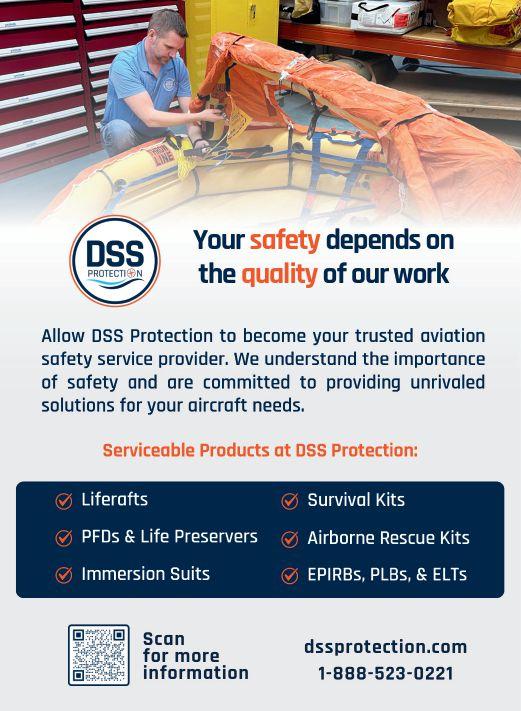









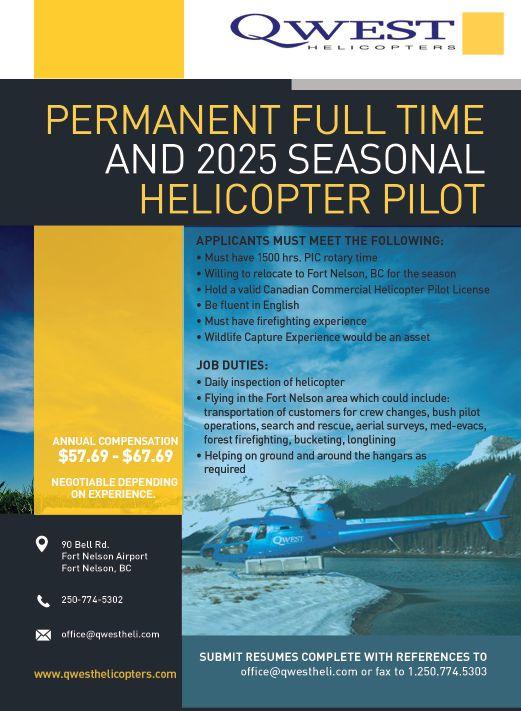







By Diana Spremo | volunteer, Canadian Harvard Aircraft Association
Nestled in the heart of southwestern Ontario is the Canadian Harvard Aircraft Association, an aviation gem that has been showcasing the Harvard aircraft for 40 years. Its unassuming presence out of the Tillsonburg Regional Airport does not match the significance of its mission – to preserve the history of the Harvard and honour those who served in them during the Second World War.
Between 1938 and 1955, more than 15,000 Harvard aircraft were produced in Canada and the United States. Harvards became essential to the Royal Canadian Air Force with various models serving from 1939 until its retirement in 1965.
Today, the Canadian Harvard Aircraft Association owns eight of these aircraft –three Mk IIs that served during wartime, and four Mk 4s that served post-war –comprising the largest fleet of Harvards in North America.
The Harvard’s role in Canada’s military aviation history is pivotal. In 1939, Canada created the British Commonwealth Air Training Plan, a program that saw 151 military flying schools across Canada train more than 130,000 air crew from Canadian and Allied Forces to become pilots, gunners, navigators, engineers and more.
Before pilots could fly fighters and bombers, they trained in a small variety of aircraft including the Harvard, the most advanced, single-engine trainer of its time.
Dubbed both “the pilot maker” and “the yellow peril”, the Harvard was considered the workhorse of Canada’s Second World War flight training program. Its bright yellow colour and distinct engine roar was a familiar sight and sound at air bases across the country.
“Still today, ‘the roar of the Harvard’ is a relevant phrase we use often, as it reminds us of the legacy these warbirds left behind and how important it is to preserve their historical significance,” Walther Irie, President of the Canadian Harvard Aircraft Association, explains.
The association is celebrating its 40th anniversary in 2025. What began in 1985 as a dream to preserve the Harvard aircraft

chaa began in 1985 as a dream by three friends to preserve the harvard aircraft.
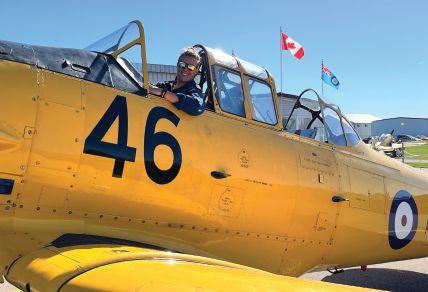
by three friends and aviators, on a grass strip in Woodstock, Ont., has since grown into a respected charitable organization with hundreds of members and dedicated volunteers.
Their mission remains unwavering – to
honour the memory of those who served and to ensure future generations understand the Harvard’s rich history.
Each summer, three to four aircraft are kept in flying condition, and amongst the association’s flying schedule, they are invited to perform a number of commemorative fly pasts. The most notable being their annual Remembrance Day tribute over the City of Toronto – an honour they have been doing for more than 20 years. The public is also welcome to purchase flight experiences and soar the skies as many young men did more than 80 years ago.
“We’ve had Second World War veterans visit us with their flight logbooks; and when they climb into the cockpit again, their faces can either light up or fill with tears,” Irie says. “It’s difficult to comprehend what is going through their minds, but for us, it makes all our efforts worthwhile to give them this opportunity.” | W









